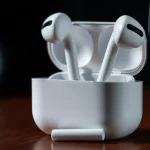Woman hospitalized for pain and vomiting diet soda helped her

In an intriguing case that highlights the complexities of abdominal issues, a 63-year-old woman experienced severe discomfort that led her to the emergency department. What ensued was a remarkable journey through diagnosis and treatment, revealing unexpected solutions to common yet debilitating health complaints.
Her story is a testament to the importance of thorough medical evaluation and creative thinking in medicine. Let's delve deeper into her symptoms, the diagnostic processes involved, and the unexpected remedy that ultimately brought her relief.
Understanding the Symptoms and Initial Diagnosis
The woman arrived at Brigham and Women’s Hospital in Boston, suffering from acute stomach pain, nausea, and persistent vomiting. This distressing situation had lasted a month, and she described her pain as a burning sensation that radiated from her upper abdomen, wrapping around to her back.
Her medical history was extensive, including:
- Type 2 diabetes
- Stage 2 chronic kidney disease
- Opioid use disorder
- Gastroesophageal reflux disease (GERD)
In addition to her existing health conditions, she had been taking semaglutide, a medication for weight loss, which contributed to a significant weight reduction of about 40 pounds. This rapid weight loss and her medication regimen likely complicated her symptoms and made diagnosis a challenge.
Diagnostic Procedures: A Closer Look
Upon admission, doctors began a series of lab tests and imaging studies to ascertain the cause of her distress. A computed tomography (CT) scan revealed an enlarged bile duct and a stomach that appeared to be obstructed by a semi-solid mass. Further investigation through magnetic resonance imaging (MRI) corroborated the presence of a mass, which raised concerns regarding its composition and origin.
These imaging studies suggested two potential issues:
- Bile duct enlargement possibly linked to her opioid use
- The presence of a gastric bezoar
Gastric bezoars are accumulations of undigested material that can form in the stomach, leading to various gastrointestinal complications. The most common type is the phytobezoar, created from fibrous fruits and vegetables that are difficult for the body to digest. A specific subtype, known as the diospyrobezoar, originates from consuming excess persimmons, notorious for their tannin content that can lead to hard, glue-like masses in the gastrointestinal tract.
A Surprising Solution: The Role of Diet Soda
In a turn of events that surprised both the patient and her medical team, the doctors proposed a simple yet unconventional remedy: diet soda. While it might seem counterintuitive, the carbonation and acidity of diet soda can help to break down gastric bezoars, facilitating their passage through the digestive system.
Initially skeptical, the patient agreed to try this remedy. Remarkably, she experienced significant relief shortly after consuming diet soda, which prompted further discussion about the role of certain foods and beverages in digestive health.
Gastric Bezoars: More Than a Curiosity
Understanding gastric bezoars is crucial for both patients and healthcare providers. Here are some key points regarding their formation and management:
- Composition: Bezoars can form from various materials, including fibers from fruits, vegetables, and even medications.
- Symptoms: Common symptoms include nausea, abdominal pain, and vomiting, similar to those experienced by the woman in this case.
- Treatment: Management may involve dietary changes, medications, or, in severe cases, surgical intervention to remove the bezoar.
It’s essential for individuals, especially those with predisposing conditions, to be aware of their dietary choices and the potential for developing such obstructions.
Lessons Learned from the Case
This case not only reveals the complexities of gastrointestinal health but also underscores several important principles in medicine:
- Thorough Evaluation: An in-depth medical history and a comprehensive approach to diagnostics are vital in identifying underlying issues.
- Innovative Solutions: Sometimes, unconventional remedies can provide unexpected relief, emphasizing the need for open-mindedness in treatment.
- Patient Education: Understanding the implications of dietary choices can empower patients to make informed decisions about their health.
As healthcare continues to evolve, cases like this serve as reminders of the importance of creativity, thoroughness, and effective communication between patients and providers.
For a further exploration of how dietary choices can influence digestive health, you may find this educational video helpful:
Conclusion: A Case of Unlikely Remedies
The woman’s experience reflects the intricate relationship between our dietary habits and gastrointestinal health. While the initial symptoms were alarming, the resolution through an unexpected method highlights the importance of flexibility in medical treatment and the value of patient-provider collaboration. As we continue to learn more about the human body, it becomes ever clearer that sometimes the simplest solutions can yield the most profound results.




Leave a Reply